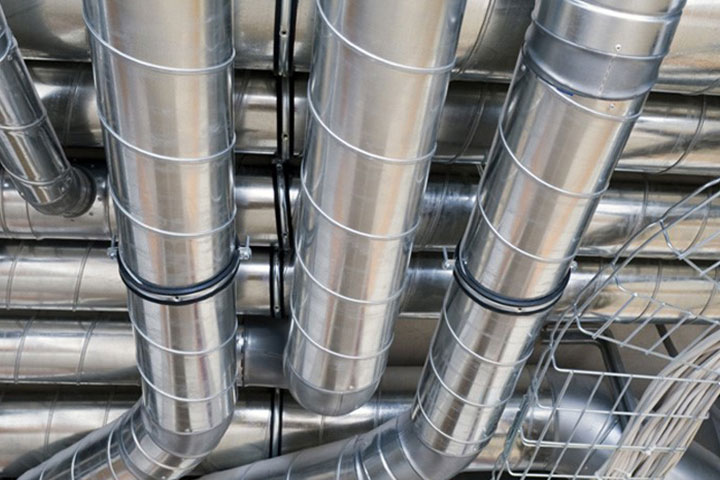
Ductwork, often overlooked, plays a crucial role in maintaining optimal indoor comfort. It’s the intricate network of pipes and vents that silently distributes conditioned air throughout your home. Understanding the basics of duct work can help you ensure efficient heating and cooling systems.
What is Ductwork?
Ductwork is a system of interconnected metal or fiberglass tubes that transports air from your HVAC system to various rooms in your home. It’s designed to deliver warm or cool air, depending on the season, and remove stale air.
Types of Ductwork:
- Flexible Ductwork: Made of flexible materials like fiberglass or aluminum, it’s easy to install and can navigate tight spaces. However, it’s less durable and prone to leaks over time.
- Rigid Ductwork: Constructed from sheet metal, it’s more durable and efficient than flexible ductwork. It’s ideal for long runs and areas with high airflow requirements.
Importance of Proper Ductwork:
- Energy Efficiency: Well-sealed and insulated ductwork prevents energy loss, reducing your heating and cooling costs.
- Indoor Air Quality: Proper ductwork helps maintain good indoor air quality by removing pollutants and allergens.
- Even Temperature Distribution: A well-designed ductwork system ensures consistent temperature throughout your home.
- Quiet Operation: Properly installed and maintained ductwork minimizes noise levels.
Common Ductwork Issues and Solutions:
- Leaks: Leaky ducts can significantly reduce the efficiency of your HVAC system. Regular inspections and sealing can help prevent energy loss.
- Poor Insulation: Inadequate insulation can lead to temperature fluctuations and increased energy consumption. Proper insulation can help maintain consistent temperatures.
- Incorrect Sizing: Improperly sized ducts can affect airflow and system performance. A professional can assess your ductwork and recommend adjustments if necessary.
- Dirty Ducts: Accumulated dust and debris in your ductwork can degrade air quality and system performance. Regular cleaning can improve both.
Tips for Maintaining Your Ductwork:
- Regular Inspections: Schedule regular inspections to identify and address potential issues early on.
- Professional Cleaning: Professional cleaning can remove dirt, dust, and allergens from your ductwork.
- Proper Sealing: Ensure all connections and joints are properly sealed to prevent leaks.
- Avoid Obstructions: Keep vents and registers clear of obstructions to ensure optimal airflow.
- Consider Ductwork Upgrades: If your ductwork is old or inefficient, consider upgrading to a more efficient system.
By understanding the basics of ductwork and taking proactive steps to maintain it, you can improve your home’s comfort, energy efficiency, and indoor air quality.